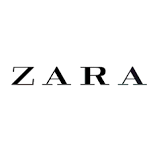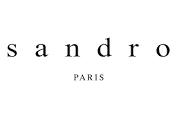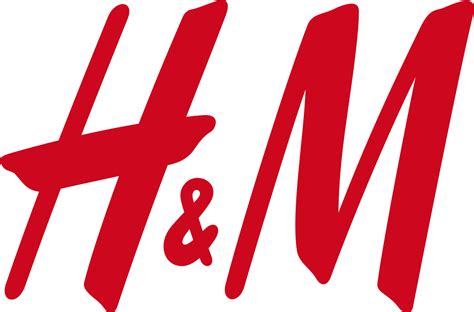Synthèse
The global women's ready-to-wear market is highly fragmented, with a variety of segments ranging from luxury to entry-level. The French market in particular is experiencing structural difficulties, with mid-range brands struggling against a backdrop of widespread market contraction accentuated by social unrest and the COVID-19 pandemic in 2020. Demand is influenced by trends such as the rise of environmental and social awareness, where 28% of consumers said they had reduced their clothing purchases for ethical reasons.
Digitization has been significant, with e-commerce gaining traction while traditional retail faces challenges, a trend fueled by consumers' growing online presence and click & collect services. Producers are increasingly scrutinized for their social and environmental commitments, with major players like H&M topping the transparency index with a score of 73%. Despite the setbacks caused by the health crisis, a slow fashion movement is emerging alongside technological advances, reshaping market dynamics.
Trends in the French women's ready-to-wear market and consumer dynamics
A notable trend in the French women's ready-to-wear market is the move towards ecologically and socially responsible fashion, with a growing number of consumers favoring sustainability in their clothing choices. However, the market is facing considerable challenges due to structural difficulties and a noticeable contraction in sales, with social unrest and the Covid-19 crisis further accentuating the decline. On the demand side, consumers are highly price-sensitive, with around 80% considering price to be a key factor when purchasing clothing. In particular, the mid-market segment, which includes brands such as H&M and Zara, is experiencing saturation and competition.
At the same time, the entry-level and luxury segments are relatively more resilient to market pressures. An interesting aspect of consumer behavior is that while almost 80% of women make frequent clothing purchases, the average spend per transaction is moderate, with figures ranging from around 45 to 65 euros, varying according to age group. The 55-64 age group invests the most in ready-to-wear, followed by young and middle-aged people. The emergence and growth of e-commerce represents a fundamental change in the retail landscape.
The proportion of clothing sales made online has jumped from around 14% to 26%, a trend catalyzed by pandemic-induced store closures and social distancing measures. This shift towards digital platforms is significant, given that e-commerce has recorded an impressive increase in market share in just over three years.
Despite the difficulties encountered, the French women's ready-to-wear market is characterized by its flexibility and is aligning itself with prevailing consumer trends that favor social and environmental responsibility. The adoption of ethical fashion is on the rise, with over a quarter of consumers reducing their clothing purchases for ethical or ecological reasons.
In conclusion, the French women's ready-to-wear market is going through a period of change, marked by consumer demand for sustainability, the ubiquity of fast fashion and the rise of e-commerce. Although sales have been impacted by economic and social factors, initiatives focused on ethical production and digital transformation present new avenues for growth and innovation in the sector.
Key trends: the major brands shaping the women's ready-to-wear market
In the diverse and ever-changing landscape of women's ready-to-wear, a matrix of leading brands lays claim to various niches, each bringing a unique aesthetic and market strategy that reflects the preferences of contemporary consumers. The rich tapestry of the market includes leading names that can be roughly classified into different market segments, from fast fashion to the timeless elegance of luxury apparel.
- Fast fashion and mid-range enthusiasts
Among the sector's driving forces are fast fashion and mid-range brands, known for their speed of execution and their ability to bring the latest catwalk trends to the masses at affordable prices. Brands such as Kiabi and Gémo have made a name for themselves in the entry-level segment, offering trendy items at affordable prices, meeting the needs of a broad public looking for fast, inexpensive fashion. H&M and Zara stand out in the mid-range segment, often praised for their ability to capture the zeitgeist and translate it into coveted collections that resonate with style-conscious shoppers. With an extensive global footprint, they have become mainstays for consumers looking for fashionable clothes that balance cost and perceived quality.
- Pioneers of pure play
Venturing into the digital realm, pure players like Veepee and Asos have established themselves as formidable forces in the ready-to-wear market. These exclusive online platforms have mastered the art of e-commerce, offering a vast selection of clothing at consumers' fingertips, often customized to their individual tastes. Their agility in the digital space has enabled them to offer different brands and adapt quickly to changing market trends.
- Luxurious, high-end lineage
At the top of the fashion pyramid, luxury brands such as Hermès and Prada exude exclusivity and craftsmanship, appealing to the upper echelons of the market where brand heritage and prestige dictate desirability. These great houses have long been associated with unrivalled quality and creations that transcend seasonal whims, establishing themselves as benchmarks for the sector. Not far away, upmarket rivals Sandro and Maje offer a blend of accessible luxury, capturing the hearts of those who seek superior quality without venturing into the opulent realms of true luxury. These brands offer contemporary clothing
à la compréhension de ce marché
Détail du contenu
 Informations
Informations
- Nombre de pages : 30 pages
- Format : Version digitale et PDF
- Dernière mise à jour : 19/05/2023
 Sommaire et extraits
Sommaire et extraits
1 Market overview
1.1 Definition and scope of the study
Ready-to-wear refers to all clothing items produced in series thanks to a standardization of sizes. It is therefore opposed to made-to-measure. Non-textile shoes and accessories, as well as products for children, are excluded from this study.
The global women's ready-to-wear market is expanding, notably due to the dynamism of the Asia-Pacific and US markets, which are driving growth. The market is also characterized by a fragmented structure, with no single company accounting for more than 3% of the sector's market share by 2020.
Similarly, the French women's ready-to-wear market is fragmented and divided into several segments, each dominated by leading brands. Indeed, the market is divided according to the price range offered, from entry-level (Kiabi, Gémo) and luxury ready-to-wear (Hermès, Prada) to mid-range (H&M, Zara, Camaïeu) and high-end (Sandro, Maje). In addition to these players, there are also pure players such as Veepee and Asos.
This very strong fragmentation has led to a saturation of the offer which weighs on the French women's ready-to-wear market, particularly on the mid-range brands which represent a large majority of players.
The French ready-to-wear market is experiencing difficulties, as evidenced by a structural contraction in ready-to-wear sales in France. This decline has been accentuated by the social movements of 2019 and the Covid-19 crisis of 2020.
However, the women's ready-to-wear market is evolving in line with trends that constitute important growth drivers.Social and environmental commitment is particularly important in this sector. in addition, the digitalization of the market and the significant influence of marketing and communication campaigns.
1.2 The global market for women's ready-to-wear clothing
The global women's apparel market is growing, but this growth is primarily driven by the dynamic Asian and U.S. markets. The global women's apparel market was estimated to be worth US$*.*** billion in **** and is expected to grow at a CAGR of *.*% between **** and ****.[***] However, this estimate goes beyond the ...
1.3 The French market in difficulty
The French women's ready-to-wear market is experiencing strong structural difficulties, affecting the mid-range segment in particular. The year **** had rekindled hopes of a recovery, but the market's decline became apparent once again in ****. In ****, sales of women's ready-to-wear in France were thus estimated at**.* billion euros.
The health crisis has weighed ...
1.4 Foreign trade in women's ready-to-wear clothing
Women's ready-to-wear imports can be estimated from the share of imports from China. Indeed, **.*% of women's ready-to-wear imports came from China in **** and this share amounted to €*,***.* million according toFashion Network. The amount of imports can be obtained by the following calculation: *** * ****.* / **.*.
Therefore, French imports of women's ready-to-wear can be estimated ...
1.5 The effect of Covid-19
The Covid-** crisis has strongly impacted the ready-to-wear market, as shown in the chart below, which illustrates the evolution of retail sales in value of clothing in specialized stores (***). Due to the qurantine and drop in store traffic, the turnover of specialty stores was divided by * between April **** and April ****.
Sales ...
2 Analysis of the demand
2.1 Consumer profile
Who is buying?
In ****, the average budget per woman decreased by *%, from *** to *** euros, which is indicative of the deconsumption of ready-to-wear that will be explored in more detail in section *.*. Furthermore, the graph below shows that the age categories that spend the most on ready-to-wear are **-** year olds and ...
2.2 Determinants of demand
Source: ****
For their ready-to-wear purchases, French women are primarily inspired by their entourage (***) and everyday people.
François-Marie Grau, General Secretary of the French Federation of Women's Ready-to-Wear, states: "French women are more inspired by their relatives and other people of everyday life and less by people who are supposed to ...
2.3 Demand trends: CSR, a major issue
Ready-to-wear brands are facing a phenomenon of deconsumerism that is growing: **% of French people bought less clothing in ****.[***] In ****, this figure even reached **% for the entire population and **% for women.
The first reason why the consumption of women's ready-to-wear clothing is decreasing is the decline in household purchasing power and the ...
3 Market structure
3.1 Ready-to-wear value chain
The women's ready-to-wear market is divided into the following stages. Using raw materials, textile producers manufacture and supply these textiles to ready-to-wear producers. These ready-to-wear producers make collections of products that are then distributed through various channels to French women.
Source: ****
The production of women's ready-to-wear distributed in France is mostly ...
3.2 Distribution
The following figures are not specific to women's ready-to-wear, but to the whole category, without making a distinction of gender because these figures were unavailable, we have however considered useful to provide the following:
The production in value
If consumer demand for sustainable fashion is growing, and in particular the demand ...
3.3 Distribution: growth in e-commerce
Store or Internet? A growth of e-commerce
Women's ready-to-wear distribution France, ****-****, in percent Source: ****
Marked by the health crisis and confinements, the year **** pushed customers to turn to the internet for their clothing purchases, indeed, the share of clothing sold on the internet rose from **.**% to **% between **** and ****, an increase ...
3.4 The players: a highly segmented market
The actors of the women's ready to wear
The women's ready-to-wear market is highly segmented, with a multitude of players. We can cite the podium in market share of players in spending in the last quarter of ****[***]:
Zara (***) H&M (***) Kiabi (***)
We can also mention Camaïeu, which, before its receivership ...
4 Analysis of the offer
4.1 Types of products
Women's ready-to-wear consists of two main categories: outerwear and small outerwear which can be broken down and summarized as follows.
Outerwear includes:
protective clothing: coats, raincoats, anoraks, parkas, windbreakers, jackets, blazers, vests, etc. pants and jeans: pants, shorts, Bermuda shorts, overalls, coveralls, jeans, leggings skirts and dresses: dresses, skirts, suits, ...
4.2 The prices
General price trends
The graph below illustrates the evolution of consumer prices for women's clothing (***), made-to-measure or ready-to-wear. Although this category does not correspond exactly to the scope of the study, the graph reveals a dominant trend in ready-to-wear. Indeed, prices for women's ready-to-wear have been stable for several years. Two ...
4.3 Supply-side issues and trends
Major issues
Among the strategic themes considered important by the companies in the sector, social and environmental commitment comes in first place, with all the professionals questioned considering it to be a crucial subject in the market. The implementation of a well-defined data strategy is also considered a necessary element for ...
5 Regulation
5.1 Regulations
In-store sales
In-store sales are subject to certain rules summarized by Legalplace:
Safety and accessibility standards[***] Mandatory displays for the attention of employees Indication of prices inside and outside the store in euros and including VAT Mandatory contribution to the SACEM if music is played in the establishment
Labeling of ...
6 Positioning of the actors
6.1 Segmentation
Several specialized and non-specialized giants stand out in the French ready-to-wear market:
the Mulliez family association (***) the Beaumanoir family group (***) the Inditex group (***) the Hennes & Mauritz group (***) the LVMH group (***) : kering group (***) : sMCP group (***):
The table below also reflects the strong fragmentation of the market and describes, in a non-exhaustive way, ...
- Inditex groupe (Zara)
- Camaïeu
- SMCP Groupe (Sandro)
- Chanel
- Zalando
- Kiabi Europe
- La Halle
- Beaumanoir Groupe
- GEMO (Eram Groupe)
- H&M Groupe
- Comptoir des Cotonniers (Fast Retailing Group)
- The Kooples Diffusion
- Maus Frères
- SRP group (Showroomprivé)
- Naf Naf
- Les 3 Suisses
- Doudounes JOTT
- Mytheresa
- Blanche Porte
- Galeries Lafayette
- Printemps Groupe
- SMCP Groupe (Claudie Pierlot)
- SMCP Groupe (Maje)
- Zadig et Voltaire
- Kookaï
- Indies Groupe
- Forever 21
- Grain de Malice
- Maison Montagut - Le Chatelard
- Isabel Marant
- Vinted
- Sonia Rykiel
- Abercrombie & Fitch
- American Eagle Outfitters
- Ann Taylor (Ann Inc.)
- Pierre Cardin
- Eric Bompard
- Massimo Dutti (Inditex groupe)
- Almé
- Levi’s
 Liste des graphiques
Liste des graphiques
- Taille du marché mondial du prêt-à-porter féminin
- Taille du marché du prêt-à-porter féminin
- Enseignes de prêt-à-porter préférées des 18-30 ans
- Budget moyen dédié au prêt-à-porter par femme et par tranche d'âge
- Quels types de vêtements achetez-vous ?
Toutes nos études sont disponible en ligne et en PDF
Nous vous proposons de consulter un exemple de notre travail d'étude sur un autre marché !
Dernières actualités
Entreprises citées dans cette étude
Cette étude contient un panorama complet des entreprises du marché avec les derniers chiffres et actualités de chaque entreprise :
 Choisir cette étude c'est :
Choisir cette étude c'est :
Accéder à plus de 35 heures de travail
Nos études sont le résultat de plus de 35 heures de recherches et d'analyses. Utiliser nos études vous permet de consacrer plus de temps et de valeur ajoutée à vos projets.
Profiter de 6 années d'expérience et de plus de 1500 études sectorielles déjà produites
Notre expertise nous permet de produire des études complètes dans tous les secteurs, y compris des marchés de niche ou naissants.
Notre savoir-faire et notre méthodologie nous permet de produire des études avec un rapport qualité-prix unique
Accéder à plusieurs milliers d'articles et données payantes
Businesscoot a accès à l'ensemble de la presse économique payante ainsi qu'à des bases de données exclusives pour réaliser ses études de marché (+ 30 000 articles et sources privées).
Afin d'enrichir nos études, nos analystes utilisent également des indicateurs web (semrush, trends…) pour identifier les tendances sur un marché et les stratégies des entreprises. (Consulter nos sources payantes)
Un accompagnement garanti après votre achat
Une équipe dédiée au service après-vente, pour vous garantir un niveau de satisfaction élevé. (+33) 9 70 46 55 00
Un format digital pensé pour nos utilisateurs
Vous accédez à un PDF mais aussi à une version digitale pensée pour nos clients. Cette version vous permet d’accéder aux sources, aux données au format Excel et aux graphiques. Le contenu de l'étude peut ainsi être facilement récupéré et adapté pour vos supports.
 Nos offres :
Nos offres :
the women's ready-to-wear market | France
- Quels sont les chiffres sur la taille et la croissance du marché ?
- Quels leviers tirent la croissance du marché et leur évolution ?
- Quel est le positionnement des entreprises sur la chaine de valeur ?
- Comment se différencient les entreprises du marché ?
- Données issues de plusieurs dizaines de bases de données
Pack 5 études (-15%) France
- 5 études au prix de 75,6€HT par étude à choisir parmi nos 800 titres sur le catalogue France pendant 12 mois
- Conservez -15% sur les études supplémentaires achetées
- Choisissez le remboursement des crédits non consommés au terme des 12 mois (durée du pack)
Consultez les conditions du pack et de remboursement des crédits non consommés.
- 26/04/2024 - Ajout des informations de l'entreprise Levi’s
- 03/04/2024 - Mise à jour des données financières de l'entreprise SMCP Groupe (Claudie Pierlot)
- 03/04/2024 - Mise à jour des données financières de l'entreprise SMCP Groupe (Sandro)
- 02/04/2024 - Mise à jour des données financières de l'entreprise Abercrombie & Fitch
- 02/04/2024 - Mise à jour des données financières de l'entreprise Les 3 Suisses
- 04/03/2024 - Mise à jour des données financières de l'entreprise Zadig et Voltaire
- 04/03/2024 - Mise à jour des données financières de l'entreprise Kookaï
- 01/03/2024 - Mise à jour des données financières de l'entreprise Galeries Lafayette
- 01/03/2024 - Mise à jour des données financières de l'entreprise SMCP Groupe (Maje)
- 01/03/2024 - Mise à jour des données financières de l'entreprise Kiabi Europe
- 01/03/2024 - Mise à jour des données financières de l'entreprise Inditex groupe (Zara)
- 01/03/2024 - Mise à jour des données financières de l'entreprise Chanel
- 05/01/2024 - Ajout des informations de l'entreprise Almé
- 02/01/2024 - Mise à jour des données financières de l'entreprise SMCP Groupe (Claudie Pierlot)
- 02/01/2024 - Mise à jour des données financières de l'entreprise SMCP Groupe (Sandro)
- 01/01/2024 - Mise à jour des données financières de l'entreprise Abercrombie & Fitch
- 03/12/2023 - Mise à jour des données financières de l'entreprise Les 3 Suisses
- 03/12/2023 - Mise à jour des données financières de l'entreprise Zadig et Voltaire
- 03/12/2023 - Mise à jour des données financières de l'entreprise Kookaï
- 04/11/2023 - Mise à jour des données financières de l'entreprise Galeries Lafayette
- 04/11/2023 - Mise à jour des données financières de l'entreprise SMCP Groupe (Maje)
- 04/11/2023 - Mise à jour des données financières de l'entreprise Kiabi Europe
- 04/11/2023 - Mise à jour des données financières de l'entreprise Inditex groupe (Zara)
- 04/11/2023 - Mise à jour des données financières de l'entreprise Chanel
- 01/10/2023 - Mise à jour des données financières de l'entreprise SMCP Groupe (Claudie Pierlot)
- 01/10/2023 - Mise à jour des données financières de l'entreprise SMCP Groupe (Sandro)
- 14/09/2023 - Ajout des informations de l'entreprise Massimo Dutti (Inditex groupe)
- 02/09/2023 - Mise à jour des données financières de l'entreprise Abercrombie & Fitch
- 02/09/2023 - Mise à jour des données financières de l'entreprise Les 3 Suisses
- 02/09/2023 - Mise à jour des données financières de l'entreprise Zadig et Voltaire
- 02/09/2023 - Mise à jour des données financières de l'entreprise Kookaï
- 24/08/2023 - Ajout des informations de l'entreprise Eric Bompard
- 03/08/2023 - Mise à jour des données financières de l'entreprise Galeries Lafayette
- 03/08/2023 - Mise à jour des données financières de l'entreprise SMPC Groupe (Maje)
- 03/08/2023 - Mise à jour des données financières de l'entreprise Kiabi Europe
- 03/08/2023 - Mise à jour des données financières de l'entreprise Inditex groupe (Zara)
- 02/08/2023 - Ajout des informations de l'entreprise Pierre Cardin
- 28/07/2023 - Mise à jour des données financières de l'entreprise Chanel
- 03/07/2023 - Ajout des informations de l'entreprise Ann Taylor (Ann Inc.)
- 03/07/2023 - Ajout des informations de l'entreprise American Eagle Outfitters
- 03/07/2023 - Ajout des informations de l'entreprise Abercrombie & Fitch
- 28/06/2023 - Ajout des informations de l'entreprise Sonia Rykiel
- 25/06/2023 - Ajout des informations de l'entreprise Vinted
- 25/06/2023 - Ajout des informations de l'entreprise Isabel Marant
- 21/06/2023 - Ajout des informations de l'entreprise Maison Montagut - Le Chatelard
- 06/06/2023 - Ajout des informations de l'entreprise Grain de Malice
- 04/06/2023 - Mise à jour des données financières de l'entreprise SMPC Groupe (Claudie Pierlot)
- 04/06/2023 - Mise à jour des données financières de l'entreprise SMPC Groupe (Sandro)
- 28/05/2023 - Ajout des informations de l'entreprise Forever 21
- 25/05/2023 - Synthèse de marché : taille du marché mondial du prêt-à-porter féminin et projections de croissance, taille et projection du marché français, valeur des importations, exportations et principaux partenaires commerciaux, analyse de l’impact de la crise sanitaire





 À 151 ans, Levi's met encore ses magasins pour rester désirable - 26/04/2024
À 151 ans, Levi's met encore ses magasins pour rester désirable - 26/04/2024
 Réduction de participation des Galeries Lafayette dans Carrefour - 26/03/2024
Réduction de participation des Galeries Lafayette dans Carrefour - 26/03/2024
 Beaumanoir : le redressement réussi de La Halle dans le prêt-à-porter - 25/03/2024
Beaumanoir : le redressement réussi de La Halle dans le prêt-à-porter - 25/03/2024
 Zara, Bershka, Massimo Dutti, Toutes les enseignes Inditex en croissance de 10% et plus en 2023 - 14/03/2024
Zara, Bershka, Massimo Dutti, Toutes les enseignes Inditex en croissance de 10% et plus en 2023 - 14/03/2024
 Showroomprivé progresse malgré la crise du textile - 14/03/2024
Showroomprivé progresse malgré la crise du textile - 14/03/2024
 Quel avenir pour Naf Naf - 06/03/2024
Quel avenir pour Naf Naf - 06/03/2024






















